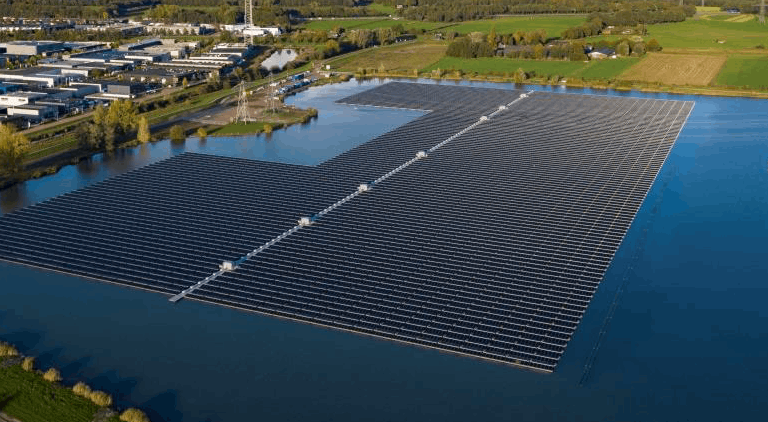Analysing technical potentials of solar power plants
By EPR Magazine Editorial March 26, 2020 11:48 am IST
By EPR Magazine Editorial March 26, 2020 11:48 am IST

Fraunhofer Institute of Solar Energy Systems ISE, commissioned by the renewable energy developer BayWa r.e., investigated the technical potential of floating photovoltaics (FPV) on pit lakes in former lignite mines, in Germany. Such FPV plants located at man-made lakes, can alleviate the competition for land use and further expand PV capacity in Germany. Floating PV technology has several advantages over ground-mounted systems; for instance, greater power production due to the cooling effect of water or higher efficiency of land use.
The study estimates a potential PV capacity of 56 GWp for installations on pit lakes in former lignite mines in Germany. After subtracting the estimated area use for recreational activities, tourism, nature and land conservation on pit lakes, there remains an economical potential of 2.74 GWp.
Floating PV (FPV) power plants are a relatively new concept, which holds a large potential for electricity generation worldwide, not least because it allows a land-neutral expansion of photovoltaic capacity,” said Dr. Andreas Bett, director of Fraunhofer ISE. Depending on the scenario, estimates show that up to 500 gigawatts (GW) photovoltaic generation capacity are required for a successful energy transformation. Due to the limited amount of arable land, solutions must be developed that are less dependent on land availability. A large advantage of FPV is its higher land-use efficiency (1.33 MW/hectare. The water on which the PV array floats also provides cooling which results in somewhat higher energy yields. The PV modules and, in most cases, the inverters are installed on floating devices that are anchored either on the shore or the lake bottom. Former lignite opencast mines are also good locations for FPV since a connection to the grid already exists as a rule. If an anchoring on land is not possible, then a normal ship anchor can be used. However, this can lead to additional costs, which depend on the lake depth. The electricity generation costs for floating PV systems are about 10 to 15 percent higher than the costs for conventional ground-mounted PV power plants.
Assessing the potential for pit lakes in former lignite mines
About 500 pit lakes formed from lignite mining exist in Germany, covering a total area of 47,251 hectares. Most of the lakes are located in the German states of Brandenburg (29.8 percent), Saxony-Anhalt (28.2 percent) and Saxony (15.7 percent). In order to assess the potential for electricity generation on these lakes, researchers interviewed public authorities, stakeholders and experts in authorisation, planning, installation and water protection. A theoretically useful potential of 56 GW was originally estimated. From this value, the projected area for recreational activities, tourism, nature and land conservation was then subtracted. Pit lakes smaller than one hectare, or with large fluctuations in depth or lacking possibilities for anchorage on shore were rejected for reasons of costs.
For more details,
visit: www.ise.fraunhofer.de
We use cookies to personalize your experience. By continuing to visit this website you agree to our Terms & Conditions, Privacy Policy and Cookie Policy.